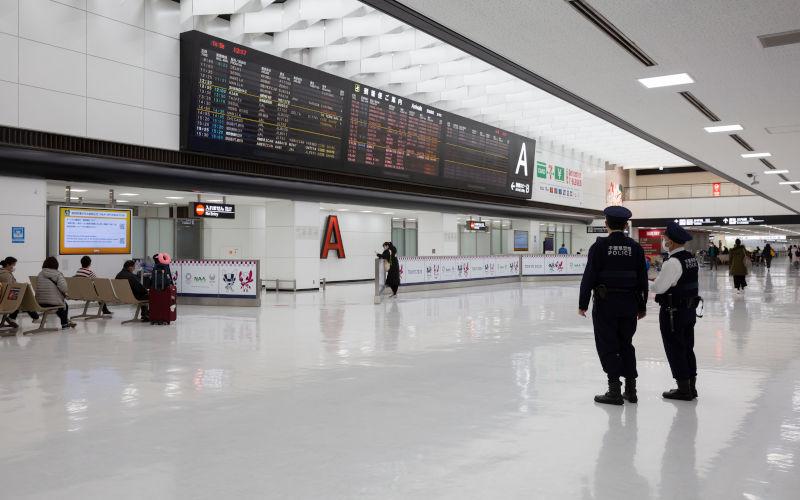COVID-19 border policies strengthen Japans Insular mindset
October 16, 2022
From April to August 2020, Japan implemented a re-entry ban for all foreign nationals, including permanent residents, with some exceptions. This came as a shock to many who considered Japan home since they found themselves either trapped outside the country or unable to leave to see sick family members or attend funerals.
While other countries had stricter COVID-19 border policies, the way border policies were implemented in Japan left a bad taste in the mouth of many long-term foreign residents The Ja__pan Times described the re-entry ban as leaving a scar on Japans foreign community.
At first, the re-entry ban announcement was only available in Japanese and, even then, was not easy to understand. The reason for treating Japanese citizens and non-citizens differently was not initially made clear, though it was later revealed that it was related to PCR inspection capacity and airport test capacities.
It was when Foreign Minister Toshimitsu Motegi responded to a question by a non-Japanese reporter about the scientific basis of the re-entry ban. Although the question was asked in fluent Japanese, Motegi side-stepped the question by switching to English and mocking the reporters Japanese ability.
While such code-switching may appear relatively innocuous, to many foreign residents in Japan it is a familiar linguistic microaggression that is part of the everyday discrimination experienced in Japanese society. These daily microaggressions may appear unconnected to COVID-19 border policies but national borders and border controls are a political manifestation of the personal borders that many Japanese maintain to reinforce difference and exclude the non-Japanese other.
Many foreign residents have had their fill of discriminatory behaviour during the pandemic. Foreign migrants in Japan have been disproportionally affected by the pandemic, particularly in terms of employment, through reduced wages and job losses, mental health and inequitable access to support.
Japanese-style multiculturalism a non-integrative policy that does little to empower foreigners or help them access social capital and become fully functioning, independent members of society worsened these impacts.
A useful framework for understanding Japans struggles in dealing with foreign migrants, and the outside world in general, is the dilemma over whether to close in or open up. Before the pandemic, Japan was undoubtedly making some progress toward opening up.
The goal of accepting 300,000 foreign students was realised in 2019 and the number of Japanese students studying abroad crept up to 115,146 in 2018. The number of foreign residents also grew, reaching a record 2.9 million in 2019. A new program, introducing a specified skilled worker visa, came into effect in April 2019 promising to greatly expand the number of foreign workers.
While, at the time of writing, Japans border controls remain the strictest among G7 nations, there are signs of easing, with individual foreign travellers set to be allowed to enter Japan from 11 October 2022. Japan re-opened borders to workers and students in March 2022 and announced a new goal of 310,000 international students by 2027. But Japan might have a hard time reaching that number given the reported decline of interest in and distrust of Japan among many foreign students and scholars.
It will also be an uphill climb to recover interest in studying abroad among Japanese students. The number of Japanese students studying abroad fell to just 1487 in 2021.
While an expert panel under the Council of Ministers is scheduled to discuss the technical trainee and specified skilled worker programs in the coming months, Japanese Prime Minister Fumio Kishida is mired in the growing scandal over the Unification Church and budget pressure to increase defence spending. He simply does not have the political capital or financial leeway to embark on any meaningful migration reform.
Even if he did, it is no longer clear that Japan is an attractive destination to live and work in for many non-Japanese the weak yen coupled with the shift in Southeast Asian economies to being net recipients of migrants may ultimately make any reform proposals too little too late.
Japans no-immigration principle an institutionalisation of the conception of the Japanese nation as a homogeneous people has been explored previously. Even before the pandemic, the term migrant was studiously avoided or replaced with euphemisms such as entrant or foreign worker.
The implication was that foreigners should not stay long or settle down and that the migration system was largely designed to use and discard foreign workers. The worry post-pandemic is that this principle has been strengthened.
While some support for opening up, especially in business and education circles, will continue, the fact that the public overwhelmingly supported the governments hard-line attitude and decisions on border policies suggests there is little prospect for a weakening of the island nation mentality any time soon.
Chris Burgess is Professor of Japanese studies at Tsuda University_, Tokyo, and author of the blog_ A British Prof in Japan.
First published in the East Asia Forum on Oct 12 2022

